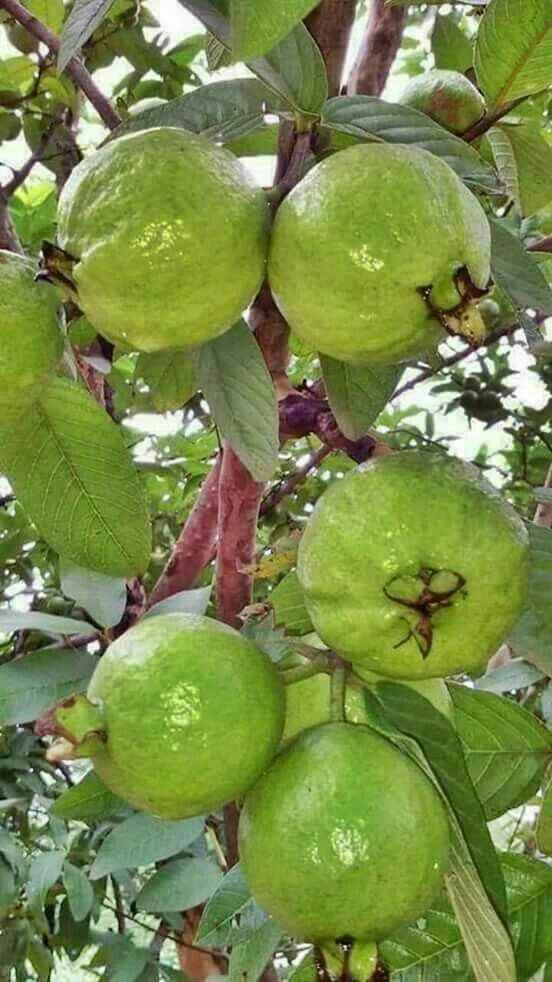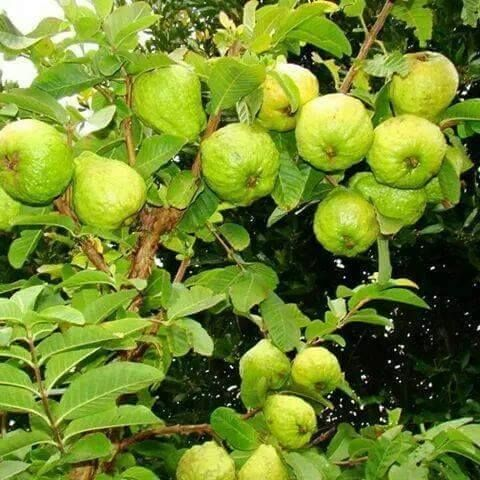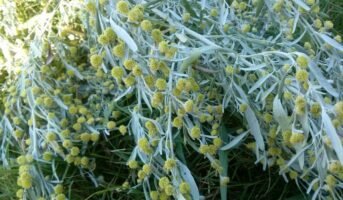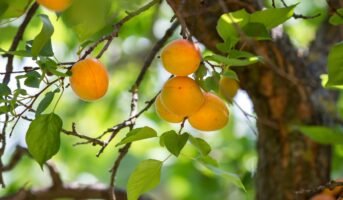Guava (Psidium guajava) is a very common tropical fruit tree that is known for its delicious flavour of the fruit. The tree is fast-growing and is also an evergreen shrub. The tree can grow up to 3 metres to 10 metres. It is said that the guava tree was first found in America and Asia, but now the tree is widespread across various tropical regions.
As the tree is also easy to grow in various regions under any environmental situation, people love to plant it in their yards or gardens. If you plan to get a healthy guava tree in your garden, you can check some details here about the tree.
Guava tree: Key facts
| Botanical name | Psidium guajava |
| Family | Myrtaceae |
| Plant type | Small tropical tree or shrub |
| Native to | Tropical and subtropical areas worldwide |
| Leaf type | Dark green, elliptical, oval |
| Flower Characteristics | White flowers with five petals and numerous stamens |
| Varieties available | Tropical White Guava, White Indonesian Guava, Red Indian Guava, Lemon Guava, etc. |
| Season | August for rainy season fruit, November- December for winter season fruit |
| Bloom time | February and June |
| Sun exposure | Direct sunlight |
| Ideal temperature | 23-26oC |
| Soil type | shallow, medium black, and alkaline soil |
| Ideal location for placement | Garden area with direct sunlight |
| Maintenance | Direct sunlight is mandatory |

Source: Pinterest
Guava tree: Physical description
The guava tree is an evergreen tree that can grow up to a height of 3 to 10 metres.
The scientific name of the guava tree is Psidium guajava. The tree has a shallow root. The trunk of the guava tree can be up to 20 cm in diameter. It is usually covered by bark. The bark peels most of the time in very thin flakes.
The leaves of the guava tree grow in pairs, but the direction of the two leaves is always in opposite directions. The leaf length can be a maximum of 13 cm long. The flowers of the guava tree are white. The most important part of the guava tree is the fruit. People have consumed guava for years, fleshy fruit with seeds inside it. The flesh colour of the fruit has a few varieties like white, yellow, red, etc. The taste is sour to sweet. Guava is enriched with lots of minerals and vitamins, which is why the fruit is always one of the best dietary fruits.

Source: Pinterest
Guava tree: How to grow?
Guava trees can grow well in tropical regions where summer is too hot and the winter season is quite cold. But with proper maintenance, the tree can grow well in various regions. Here is a detailed way to plant a guava tree.
- Choose a good location where sunlight can come directly.
- Moist soil with a sound drainage system is mandatory.
- You can plant your guava tree at the end of March.
- Now, the most important thing is to choose a seed or a sapling. If you want to choose a seed for planting, then it will take eight years to give fruit. Or else, you can choose a good sapling for planting.
- Cut a deep hole for the sapling to make it sit. You have to fill the area around the sapling by putting in extra soil as per requirement.
Guava tree: Maintenance tips
- Direct sunlight is much needed for the guava tree.
- You can water the tree every two to three days when it is not fully grown.
- Make it clear that waterlogging must not be there. Otherwise, the root of the tree will be rotten.
- You can fertilise the soil every three months to add macro and micronutrients essential for good health.
- In winter, you can cover the small tree to cover it from frost because it kills guava trees.
Guava tree: Benefits
Guava is a good source of antioxidants and potassium. The fruit is used for various issues in human bodies. Here are the benefits of guava fruits and leaves.
Controls blood sugar level
Guava leaf juice or extract is extremely beneficial for controlling blood sugar levels. It keeps the sugar level exactly at the right stage, which reduces blood sugar-related health issues.
Improves heart health
The high amount of potassium and sodium in the guava help to protect the heart from various issues. These two help to keep the body balance checked always. Also, it reduces high pressure. Guava is also helpful in increasing good cholesterol in the human body.
Reduces PCOS problems
Guava is a good source of antioxidants. This property helps to reduce various problems related to polycystic ovarian diseases in female bodies. Also, it helps to minimise PCOS-related pain during the menstrual cycle.
Improves digestive system
Guava is packed with fibre, which helps to keep the digestive system in a good state. It maintains the best bowel movements.
Reduces chances of cancer
In guava, a lot of antioxidants are present, which help reduce any carcinogenic effects. Guava is known for stopping breast cancer cells.
Improves eyesight
Vitamin A present in guava helps to keep a good eyesight level. It prevents cataracts.
Good for toothache
Guava leaves help to reduce various tooth problems. For years, guava leaf extract has been used in gum problems too. It prevents various pain-causing germs and bacteria in the tooth area.

Source: Pinterest
Guava tree: Is this plant toxic?
No, the guava tree is not toxic.
FAQs
What is the scientific name of the guava tree?
The scientific name of the guava tree is Psidium guajava.
Does the guava tree demand direct sunlight?
Yes, direct sunlight is a must-have factor for guava trees.
What are the major benefits of guava?
Guava is beneficial for heart health, eyesight, tooth problems, etc.
Housing News Desk is the news desk of leading online real estate portal, Housing.com. Housing News Desk focuses on a variety of topics such as real estate laws, taxes, current news, property trends, home loans, rentals, décor, green homes, home improvement, etc. The main objective of the news desk, is to cover the real estate sector from the perspective of providing information that is useful to the end-user.
Facebook: https://www.facebook.com/housing.com/
Twitter: https://twitter.com/Housing
Email: editor@housing.com












